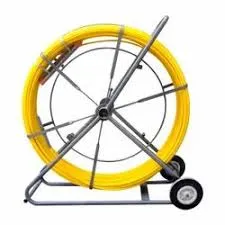
-
 Afrikaans
Afrikaans -
 Albanian
Albanian -
 Amharic
Amharic -
 Arabic
Arabic -
 Armenian
Armenian -
 Azerbaijani
Azerbaijani -
 Basque
Basque -
 Belarusian
Belarusian -
 Bengali
Bengali -
 Bosnian
Bosnian -
 Bulgarian
Bulgarian -
 Catalan
Catalan -
 Cebuano
Cebuano -
 Corsican
Corsican -
 Croatian
Croatian -
 Czech
Czech -
 Danish
Danish -
 Dutch
Dutch -
 English
English -
 Esperanto
Esperanto -
 Estonian
Estonian -
 Finnish
Finnish -
 French
French -
 Frisian
Frisian -
 Galician
Galician -
 Georgian
Georgian -
 German
German -
 Greek
Greek -
 Gujarati
Gujarati -
 Haitian Creole
Haitian Creole -
 hausa
hausa -
 hawaiian
hawaiian -
 Hebrew
Hebrew -
 Hindi
Hindi -
 Miao
Miao -
 Hungarian
Hungarian -
 Icelandic
Icelandic -
 igbo
igbo -
 Indonesian
Indonesian -
 irish
irish -
 Italian
Italian -
 Japanese
Japanese -
 Javanese
Javanese -
 Kannada
Kannada -
 kazakh
kazakh -
 Khmer
Khmer -
 Rwandese
Rwandese -
 Korean
Korean -
 Kurdish
Kurdish -
 Kyrgyz
Kyrgyz -
 Lao
Lao -
 Latin
Latin -
 Latvian
Latvian -
 Lithuanian
Lithuanian -
 Luxembourgish
Luxembourgish -
 Macedonian
Macedonian -
 Malgashi
Malgashi -
 Malay
Malay -
 Malayalam
Malayalam -
 Maltese
Maltese -
 Maori
Maori -
 Marathi
Marathi -
 Mongolian
Mongolian -
 Myanmar
Myanmar -
 Nepali
Nepali -
 Norwegian
Norwegian -
 Norwegian
Norwegian -
 Occitan
Occitan -
 Pashto
Pashto -
 Persian
Persian -
 Polish
Polish -
 Portuguese
Portuguese -
 Punjabi
Punjabi -
 Romanian
Romanian -
 Russian
Russian -
 Samoan
Samoan -
 Scottish Gaelic
Scottish Gaelic -
 Serbian
Serbian -
 Sesotho
Sesotho -
 Shona
Shona -
 Sindhi
Sindhi -
 Sinhala
Sinhala -
 Slovak
Slovak -
 Slovenian
Slovenian -
 Somali
Somali -
 Spanish
Spanish -
 Sundanese
Sundanese -
 Swahili
Swahili -
 Swedish
Swedish -
 Tagalog
Tagalog -
 Tajik
Tajik -
 Tamil
Tamil -
 Tatar
Tatar -
 Telugu
Telugu -
 Thai
Thai -
 Turkish
Turkish -
 Turkmen
Turkmen -
 Ukrainian
Ukrainian -
 Urdu
Urdu -
 Uighur
Uighur -
 Uzbek
Uzbek -
 Vietnamese
Vietnamese -
 Welsh
Welsh -
 Bantu
Bantu -
 Yiddish
Yiddish -
 Yoruba
Yoruba -
 Zulu
Zulu


Sep . 21, 2024 12:20 Back to list
'chain pulley motor - measuring wheel'
Chain Pulley Motor - Measuring Wheel An Overview
In the realm of mechanical engineering and machinery, the chain pulley motor and measuring wheel system stands out as an indispensable mechanism for a variety of applications. This system efficiently combines power transmission, motion control, and precision measurement, making it essential in industries ranging from manufacturing to logistics.
Understanding the Chain Pulley Motor
The chain pulley motor operates on the principles of mechanical advantage and rotational motion. A typical setup consists of an electric motor that drives a chain, which is looped around one or more pulleys. The pulleys serve to redirect the force applied by the motor, translating it into linear motion. This design allows for the efficient transfer of power over distances, making it ideal for lifting heavy loads or driving machinery in an organized manner.
One of the primary advantages of using a chain pulley system is its durability and reliability. Chains can withstand considerable tension and are less likely to slip compared to belts, which makes them well-suited for environments where high loads are common. Furthermore, maintenance on chain systems is straightforward, primarily requiring occasional lubrication and tension adjustments.
The Role of the Measuring Wheel
Integral to many chain pulley motor systems is the measuring wheel, which plays a crucial role in monitoring and controlling motion. A measuring wheel is typically a cylindrical device that rolls along a surface, translating distance traveled into a measurable signal. In the context of a chain pulley motor, the measuring wheel can provide real-time feedback on the position or speed of the moving part.
'chain pulley motor - measuring wheel'

The measuring wheel often incorporates sensors that can detect its rotation. Each rotation corresponds to a specific distance traveled, allowing for precise calculations crucial for automation and control systems. This data can be relayed back to a central processing unit, enabling adjustments to motor speed or direction based on real-time feedback. Consequently, this promotes greater efficiency and output consistency in applications ranging from conveyor belts in warehouses to automated assembly lines.
Applications and Benefits
The combination of a chain pulley motor and measuring wheel is particularly prevalent in industries where heavy lifting and precise movement are essential. For instance, in warehouse logistics, these systems are employed to move products swiftly and accurately while allowing for monitoring of, and adjustments to, the movement pace.
Moreover, in construction, a chain pulley motor with a measuring wheel can assist in the lifting of materials across significant heights, ensuring the right quantities are delivered to the right locations without compromising safety or efficiency. Additionally, in manufacturing processes, this technology helps in maintaining the synchronization of assembly lines, ensuring that components are positioned correctly for assembly.
Conclusion
The chain pulley motor coupled with a measuring wheel exemplifies the fusion of power and precision in mechanical systems. As industries continue to strive for enhanced efficiency and accuracy, the importance of these technologies will only grow. Advancements in sensor technology and automation will further enhance their capabilities, ensuring that they remain a cornerstone of mechanical design and implementation in the future. By understanding their operation and applications, engineers can optimize productivity and reliability in a wide range of industrial contexts.
Latest news
What Are Construction Tools and How Are They Used?
NewsJul.11,2025
Professional-Grade Duct Rodding Tools for Superior Cable Installation
NewsJul.11,2025
Enhancing Safety and Efficiency with Modern Hot Stick Solutions
NewsJul.11,2025
Empowering Cable Installation with Advanced Rodder Solutions
NewsJul.11,2025
Elevate Your Cable Installation Projects with Cable Pulling Tools
NewsJul.11,2025
Efficient Cable Handling Solutions: Cable Rollers for Sale
NewsJul.11,2025











